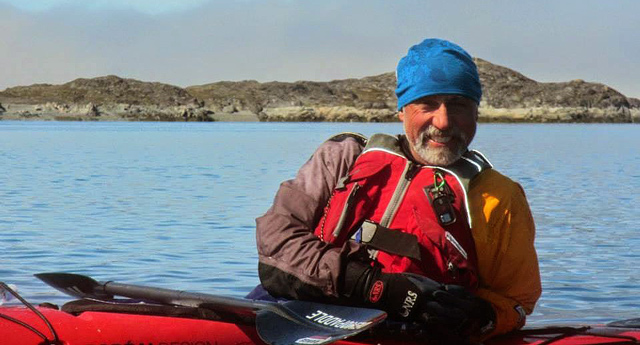Paddling Strokes & Braces by Michael Gray

The Sweep Stroke
Hey, sometimes you just don’t want to go straight! Sweeps are used for turning and as a component stroke in a number of other dynamic paddle motions including Eskimo rolls. They are part of your basic skills tool box. So, instead of just paddling relentlessly on one side, let’s make it really work for us.
The Forward Sweep: For a turn to your right, start with hands in your normal hand position on the paddle (shoulder width apart, relaxed hand grip and arms stretched out). Now, wind your torso to the right so that your right hand comes back to about your navel and your left hand reaches forward until your paddle enters the water right next to the front or your kayak. While keeping your right hand gripping your paddle in your lap, unwind to the left drawing a wide arc out to your left side with your paddle blade until it reaches all the way back to the back of your boat. You should have made a fairly smooth turn to the right. For a turn to the left repeat the process on the other side, mirroring what you just did on the left.
The Forward Stroke
It propels us in a straight line. Although it may be the stroke we do 95% of the time to get around, it is also the stroke that most of us are the least proficient at. This little tune-up is borne out of influences of the BCU, ACA and Greg Barton, one of the best forward stroke artists ever. Before we get started on the actual stroke, lets get connected to the paddle in a healthier way.
Start with a loose hand grip…like you are holding your paddle with your thumbs and forefingers in an OK sign. This allows you to get good reach without cocking your wrists back and forth, reduces friction (no blisters), allows good blood flow (keeping your fingers warm) and helps your forearms to relax. Your hands should be about shoulder width apart. Ultimately, your arms just attach you to your paddle which you move with the larger muscle groups in your back, stomach and your butt. So, how do we do that?
The Low Brace & its Cousins
How to avoid the upside down thing…
Bracing, it keeps your head in a gaseous oxygen environment. The low-brace is your primary defense against flushing those sinuses unexpectedly. It should be automatic, much like catching yourself with the flats of your hands from a slip on an icy sidewalk. Automatic, as in don’t think about it, just do it. Its part of your basic skills toolbox along with your forward stroke and sweep stroke.
Here’s how its done:
The High Brace
If you followed our piece on the low brace, you now know that it is your first line of defense against capsize. What happens if capsize is imminent? The fertilizer has hit the ventilator, you’ve passed the point of secondary stability… get the picture? It’s time for evasive maneuvers, captain: the high brace.
